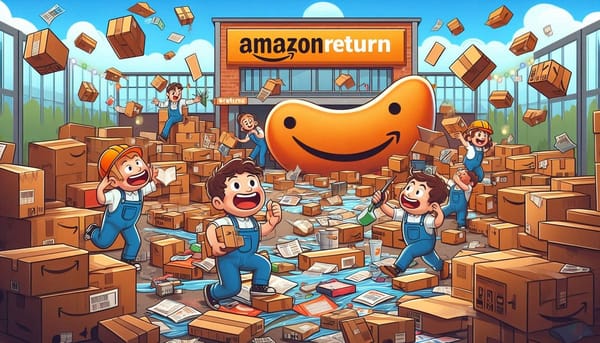Business Acumen
Everybody thinks they can be a product manager. One techie forum that I hang out on has a fetish for cheaper cars (or trucks) but they miss the mark in analysis and think that they are the market

I’m going to tell a story that will ultimately show how misguided many supposed “good ideas” are, especially in relation to business cases, strategy, and planning.
One site that I hang out on is Slashdot, an old school hang out that bills itself as “News for Nerds.” On /. (see what I did there?) there seems to always be a thread on the front page about Apple and their business practices. Not unsurprisingly the thread devolves into cliques, and bashing (of Apple fans and Android fans.) Almost always the argument is around “too expensive”, “not innovative” or “they don’t make cheap iPhones”.
A couple weeks back there was a thread where someone compared the phone business to Pickup trucks, and lamented that Ford focused on the premier F150’s (the King Rancher, or Harley Davidson edition, or the SVT offer the “Raptor”) all of which sell for near or more than $50K. This led to a pretty hefty discussion around how Ford was missing out on the base truck segment, where a pretty bland version for less than $20K (no, seriously, they did say $19,000 was a good price even though you would struggle to buy a well equipped Honda Fit for that price) and that it would sell like crazy.
There was a lot of agreement from the peanut gallery, about how Ford was “blowing it” by not making trucks in this configuration. These are the same people who think the Chinese no-name Android smartphone for $150 is something that Apple should compete against, since their profit margins are so healthy. Let’s deconstruct this logic.
The offer
The comment-er was specific. Cloth bench seat, no extended cab, an 8 cylinder engine, and none of the modern amenities (such as adaptive cruise control, lane assist, parking assist, entertainment console, etc. – very vanilla) like work trucks of old were. While it is possible Ford could build a truck at a cost where this wouldn’t be a loss leader (in my mind, the question would be whether there are the aluminum body panels that reduce weight and help meet MPG targets, and whether a V8 powerplant can be part of this, I would think a straight 6 would be cheaper, and more cost effective, but I digress) it is little doubt that like the low end smartphone business, where margins are razor thin (or negative) this would not be a huge profit generator for Ford.
Let’s assume that they could build the truck at a total cost of $14,000, and that the dynamics of the automotive dealer network apply, and about $3K of dealer incentives are needed to move the trucks. That means that on a $19K sale price, the net profit is about $2K.
But let’s assume that they make this truck, and sell the shit out of it, really blow out the forecast.
The current base F150 is pretty spartan indeed. A short cab, 3.3L V6 engine, and cloth seats, it is still pretty luxurious compared to what was base in the 1970’s or 1980’s (bench vinyl seats, inline 6, and a manual transmission – nb: the last i6 was produced in 1991), but they are pretty spartan by today’s standards.
Base price is about $28k – if you can find them. Truth is, that these are usually the teasers that are used to get people into the dealership, and give their sales team the opportunity to up-sell.
Unless you go to a dealer that specializes in fleet sales, you will find slim pickings for base F150 “XL” models in inventory.
But the premise was, build something even more spartan than the current bottom end, (and the serious poster of this tidbit mentioned that he expected it to have a V8 powerplant to boot) and offer it for a base price of $19K. They argued that this would fly off the floor like the proverbial hotcakes.
So, for grins and giggles, let’s settle on a configuration
- Single/short cab (no second row of seats, no behind seat storage)
- Base engine (sorry, not the v8, that is a premium offer, and out of scope. A drab variable valve timing v6 it is)
- Cloth seats (bucket, because, well bench seats are pretty gauche)
- few color options (white, black, and red)
- An AM/FM radio
It will not have an entertainment or other central console, nor SiriusXM (even though SXM is practically subsidizing automakers to include capable electronics in all vehicles in NA), nor cruise control, adaptive or not, no lane assist, no parking sensors, and returning to a 1980’s staple, it will not come with a rear bumper (seriously, my first pick-up truck I bought, I had to explicitly buy the bumper for).
Could Ford build this profitably at $19K? I am not sure, and the big unknown is the cost of labor and overhead. Presumably, the “fancier” versions take more labor to build, but it isn’t a huge disparity.
But why would they?
Why would they?
That is an excellent question. Ford is number one in truck sales, and has been, pretty much forever. The latest year statistics I could find was illuminating. Ford had 38% of truck sales, Chevy (Silverado) was second with 24%, the Dodge Ram series at 22%, and GMC at the bottom of the pack at 9% (and the rest a paltry 8% split between Nissan and Toyota).
Additionally, the average selling price of a F150 from the franchise is $45K. And that is taking into account fleet sales (Ford does have a well developed network of fleet sales for the trades, and that greatly helps move vehicles without the need for incentives to move inventory).
Clearly, the public is comfortable spending close to $50K for a “truck”, the packages sell well (XL, Lariat, Platinum, King Ranch, and the limited supply of the Raptor all are big sellers).
If I was a product manager at Ford, and a sales executive came to me saying that they would sell a jumbo number of sub-base models, because, like the smartphone business, the cheaper phones sell well, I would do some research (because, it is what I do) then I would counter that it is a bad strategy for several reasons:
- It isn’t clear that there is demand at the low end. If there was, the base XL’s with no extras would be selling well at $28K (and we have to assume that $28K is the price point that we can make a decent profit on, i.e. we aren’t having a loss leader).
- The demographic of the general population of truck owners are shifting to older, more affluent customers. They are willing to pay for creature comforts, even if they use their truck for their Business
- The cost of building the luxury package equipped vehicles are not much higher than the base models, but the value to the customer is higher, and they are willing to exchange cash for that level of options.
- You really need to get away from the idea that a pickup truck has to have a V8 motor. Seriously, the top end Raptor SVO edition, base price of nearly $53K, and in short supply so dealers are regularly getting $10 – $15K over MSLP, has a 3.5L supercharged V6 HO engine. Nobody will call that under-powered.
And ultimately, it will undercut the brand equity that Ford has as the leader in pick up trucks. Building a sub – base configuration of the F150 XL cheapens their identity, and damages their reputation. There may be a market there, but at that price point, there isn’t any loyalty to the bigger brand, and that isn’t in Ford’s best interest.
Add to that the fact that production capacity isn’t unlimited. Unlike ramping a web product offering where you can dial up and scale your AWS deployment as demand grows, you physically have to build each and every truck sold. You have X production lines, and they can produce Y cars/trucks each per year. You can sell them at $19K for the mythical stripper, or you can optimize your production to maximize revenue (and all those other financial terms, like ROI, IRR, and optimize the NPV). Sure, they can build, or resurrect closed production facilities, retool them to make trucks. But why would they invest that money for this “base” truck? One does not need an MBA to realize that this is a poor strategic decision.
Swinging back to smartphones
Of course, this began as a discussion by techies (the main audience on Slashdot) lamenting that Apple eschews the entry level of the smartphone business, and that they should build a cheaper iPhone to go head to head against the ZTE, and other low end Chinese made phones.
But like Ford, Apple is a premium brand, and they jealously guard that positioning in the market by not undercutting their cache with a cheaper offer. Sure, they could create a fighting brand (Dammit, I wrote a post about this once, but I can’t find where it was published. Crap.) but to be effective, they would need to make it completely separate from their flagship lines. That implies a separate ecosystem (as the strength of the iOS platform is the ecosystem, it is just enabled by the hardware purchase,) and that is just plain bad strategy.
Apple is fine in its large, ludicrously profitable segment. Their profits are top flight, and if you compare the top tier Android handsets (Samsung Galaxy series), the prices are not far off the Apple level. Sure, there are a lot of lower end product out there, but that isn’t in Apple’s wheelhouse, just like for Ford, their position in the market allows them to focus on the most profitable segments. Sure, there is plenty of opportunity to commoditize, but differentiation is key, and Apple knows how to ensure that they retain their cachet.
Final note
This is one of the key reasons that engineers and techies in general struggle in the transition to a more business oriented role like Product Management. Sure, they know bits/bytes/bauds/speed/feeds, but they – by and large – can’t separate their personal worldview from the wider audience. Thus, they build what they think is needed, such as the $19K, bench seat, white only, pickup truck, instead of realizing that the market is happy to spend an average of $45K for a truck with comfort and features that the “others” prefer – by WIDE margins.
Also, it is clear that I should spend less time reading Slashdot.




